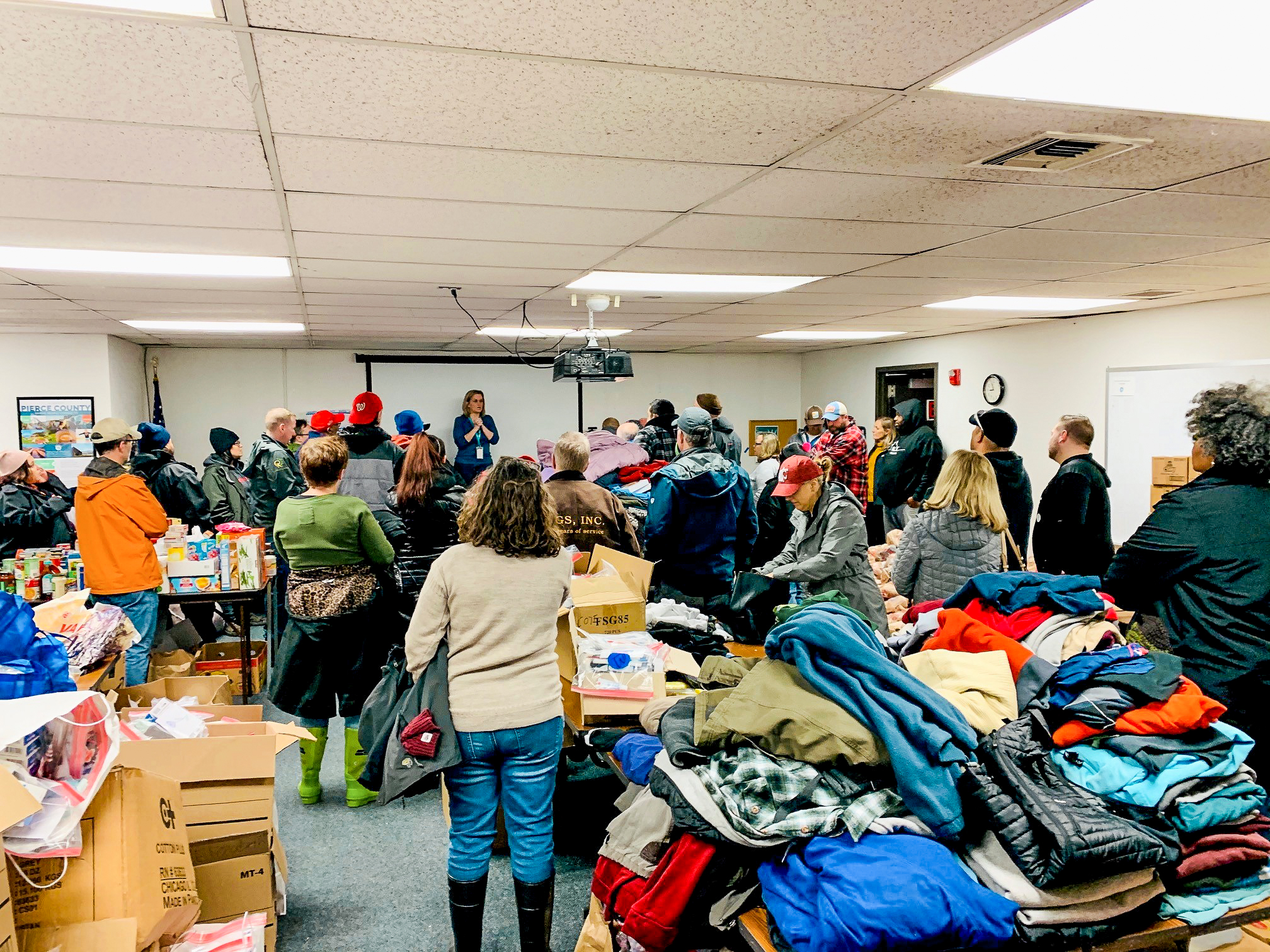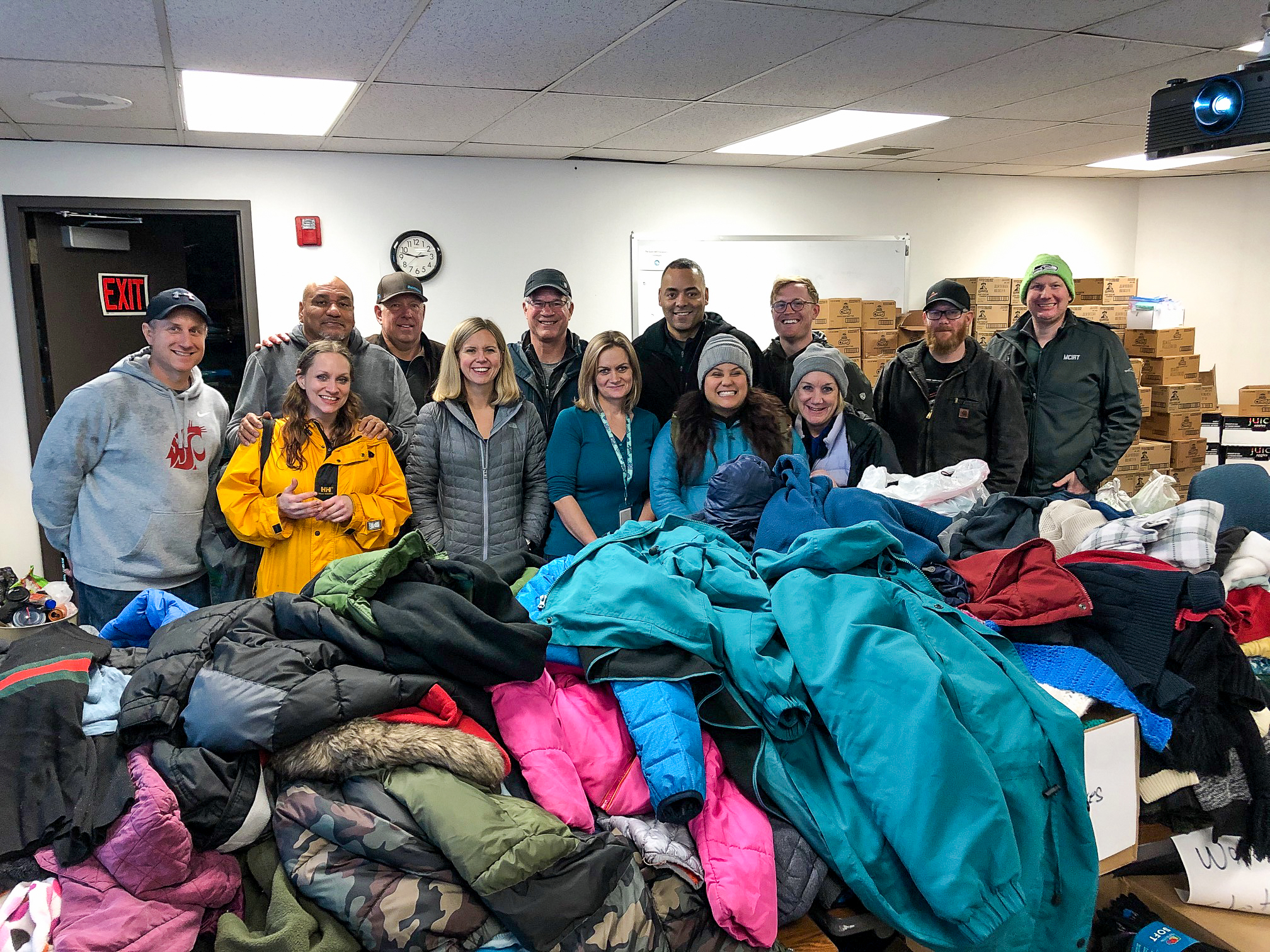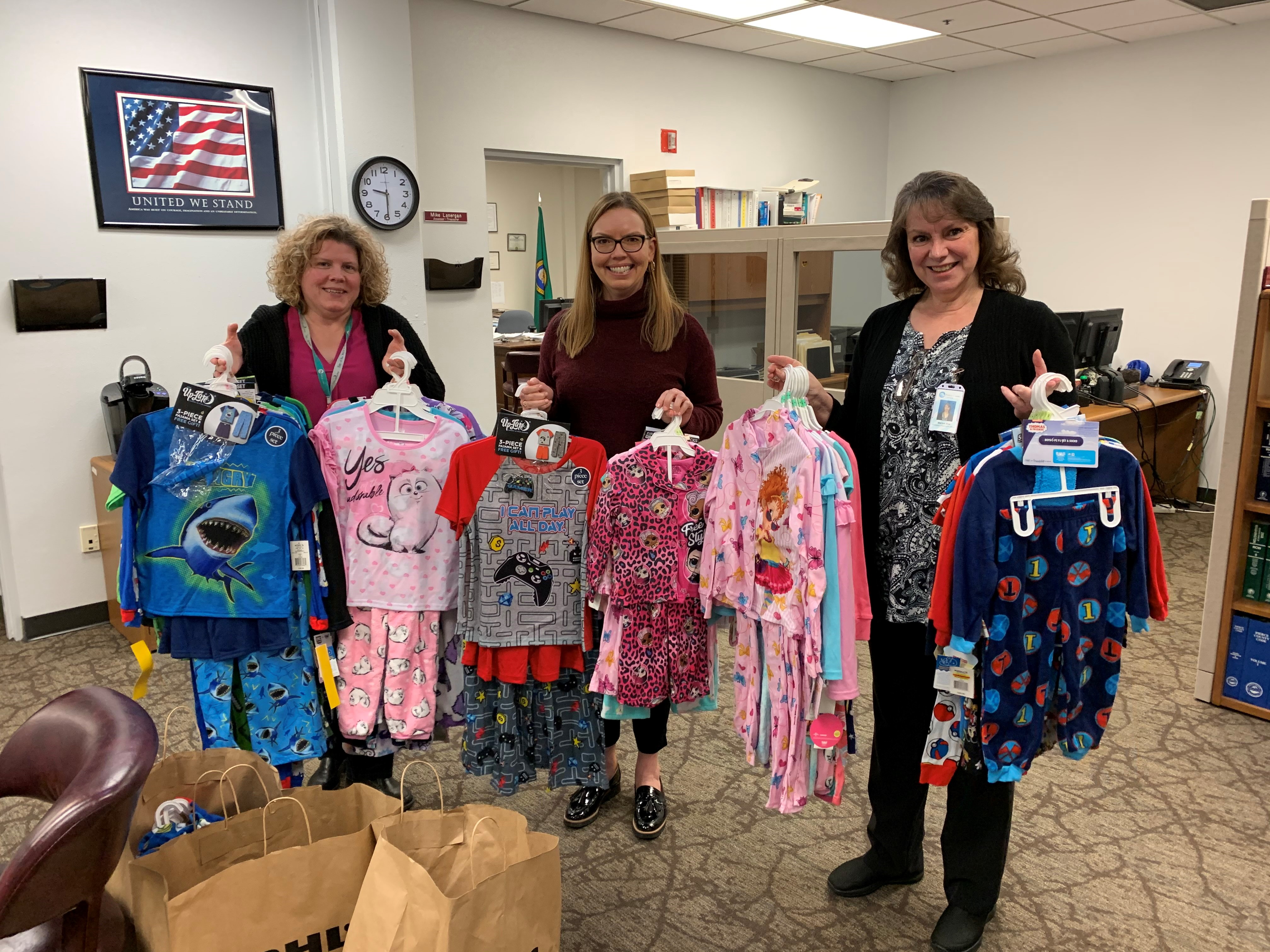The annual Point-in-Time count has been completed and the results are being reviewed and analyzed. While very important and key to helping us develop solutions, they are still just numbers. I go out with the overnight team to help ensure those numbers are the most accurate they can be, but also to see the human side of homelessness – face to face. As I have said many times, there is no substitute to seeing the people and the challenges first-hand.
On a cold and rainy January night two weeks ago, we gathered at 9 p.m. at the Soundview Building. We received our assignments and set out in cars filled with the coats, blankets and other donated items that many of you contributed. In the photo below you will see Valeri Knight giving the “overnight crew” our final instructions. Valeri coordinates the overall effort, with the help of many others – and they do a great job with a tough assignment.

Orlando Stumvoll, from Comprehensive Life Resources, led my team again this year – street smart and compassionate. The rest of our team included John Barbee from Human Services, Kari Moore, a member of the Communications team, and three other people from Comprehensive Life Resources: James Pogue, Stephanie Fallon and Carrie Morrison. This year, we were joined by Councilmember Dave Morell and Puyallup Councilwoman Cyndy Jacobsen.

Our first stop was the large encampment by the Puyallup River just inside the eastern boundary of Tacoma. We spent about two hours there and counted about 40 people. Like at several of last year’s camps, I was sad and frustrated to see people living in squalor and filth. It was unsafe and dangerous. Everyone I saw was clearly impacted by substance abuse, with many compounded by mental health illnesses. Despite their obvious impairment, the residents had built substantial structures and even had a set of steps down to the lowland areas.
I learned in my conversations with the people living there that a person had recently died. That sad loss reinforced my strong opinion that it is inhumane and unacceptable to allow people to remain in such conditions. They deserve better.
Sadly, most of the people we met were not interested in accepting the services offered to them. What do we do for those individuals? How do we help people who can’t help themselves and won’t allow others to try? Do we step in and assign a guardian? I admit that I don’t have the solution to this challenging dilemma, but I am more convinced than ever that we cannot allow people to live among needles, rodents and trash.
It left me feeling as if there had been failures on many fronts.
We left the Puyallup River encampment at around midnight and went to our second location, near 84th and Hosmer. Last year, we surveyed many people experiencing homelessness here. This year, we didn’t see any encampments, but we did see a ton of law enforcement. There were lights and sirens on when we arrived, so something was obviously going on.
Our next stop of the morning was the War Memorial Park and Swasey Library in the West End of Tacoma.
We found an old airport shuttle van at the park that appeared to be someone’s home. I followed a path in the wooded area and came to a tent camp. No one responded when I approached, but the site was very clean and organized – a marked contrast to the site by the river.
Next, we met a man who was about 65 years old at the doorway of the Library. He woke up when we approached and spent a good deal of time with us. He had quite a bit to share with us – including his frustrations with some of our nonprofit service providers. He did, however, give a shout-out to the YMCA for allowing him to use their showers. He said he has been sleeping at the Library entrance for about four months. If he had any chemical or mental health issues, they were not readily apparent to me.
The last stop on our shift was at Titlow Park overlooking the Narrows. There were a few cars parked there at 2:00 a.m. One of them had a couple in their 30’s living in it – packed with all their possessions.
Last year, addiction and mental health seemed to impact every person I saw. This year, behavioral health was still dominant, but I also saw folks who have been forced into homelessness by our increasingly unaffordable housing market. I heard about one blind couple whose combined disability payments had not kept up with the rising housing costs. They lost their home and only recently found a new place to live.
Here are a few takeaways from the cold night and my discussions with the pros on our team:
- Thanks to programs like the Beacon Center and Coffee Oasis, we are making progress with our homeless youth. The Arlington Drive project in Salishan will help even more young people when it is completed.
- The under-construction Crisis Recovery Center in the Parkland/Spanaway area can’t come soon enough!
- The new Assisted Outpatient Treatment program encourages me. This program is designed to help those who have stabilized after a crisis stay stable – and get control of their lives.
- We still have a long way to go to solve the problems created by the lack of affordable housing – and the housing shortage.
- I’m wrestling with what we do with people who are clearly drug addicted and refuse services. I can’t think it is humane or compassionate to allow these individuals to continue with what Sheriff Pastor calls “a slow suicide.”
My thanks to the hundreds of people who volunteered their time to help us gather the information in the Count and distribute the items that were generously donated by many of you.
My special thanks to Heather Moss, John Barbee and Valeri Knight in Human Services for their leadership, care and commitment to our community. Lastly, I’m grateful to Councilmember Morell for his willingness to share the overnight shift with us.
I’ll close by letting you know if you’d like to get an insightful, in-depth look at homelessness in the Puget Sound, I would encourage you to listen to the new podcast series “Outsiders.” The series is produced by KNKX, based on a year of research in conjunction with the Seattle Times. The primary reporter is Will James and he brings a great deal of compassion and curiosity to this complex challenge. I am nearly done with episode 2!
Lastly, I am always impressed by the incredible generosity of our colleagues. Yesterday (Thursday), I attended the Assessor-Treasurer’s All Staff Meeting and learned they are putting together 107 “me bags” for children going into foster care. Thanks to Marion Roe and all her helpers for supporting our littlest residents when they need it the most!


Thanks for reading,
![]()
Bruce
